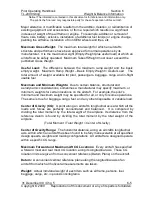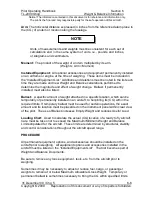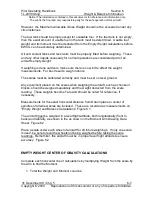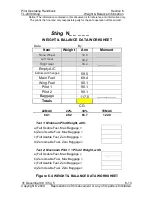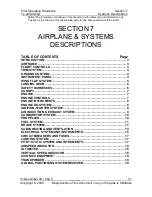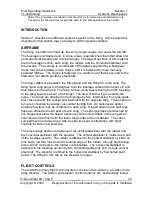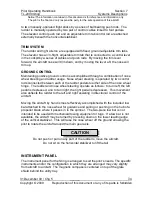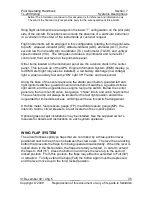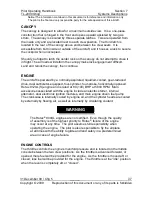
Pilot Operating Handbook
Section 7
TL-2000
Sting
Systems Descriptions
Notice! The information contained in this document is for reference and information only.
The pilot is the final and only responsible party for the safe operation of this aircraft.
31 December 09 / Chg 5
______
7-5
Copyright © 2009 Reproduction of this document or any of its parts is forbidden.
Sting flight instruments are arranged in the basic “T” configuration on the pilot (left)
side of the aircraft. Exceptions can include the absence of a particular instrument
or a variation in the order of the instruments at customer request.
Flight instruments will be arranged in this configuration (starting from the pilot-side
top left): airspeed indicator (ASI), attitude indicator (ADI), altimeter (ALT), (to the
second row from the left) turn coordinator (TC), tachometer (TACH), and vertical
speed indicator (VSI). The Sting also includes a slip indicator and remote ELT
control and front vent lever on the pilot-side panel.
Other items located on the instrument panel are the avionics stack in the center
panel. This is made up of the GPS, Engine Information System (EMS) display, (a
red EMS alert light may also be installed), a red battery discharge (low voltage)
light, a green auxiliary fuel pump “ON” light, VHF radio, and transponder.
Along the base of the center panel are the starter push button, guarded left and
right ignition switches, guarded main and instrument switches, a guarded strobe
light switch, and the unguarded aux engine fuel pump switch. Below the center
panel are the fuel shut-off valve, fuel gauge, “choke” knob, and cabin heat control.
The aux fuel pump will always be located on the last right position and will be
unguarded for immediate access. All Stings will have this switch arrangement.
A Hobbs meter, fuel pressure gauge (FP), manifold pressure gauge (MP), the
intercom control, circuit breakers, are all located on the co-pilot’s panel.
Optional glass cockpit installations may be installed. See the supplied owner’s
manuals for details and instructions on each system operation.
WING FLAP SYSTEM
The aircraft utilizes split-type flaps that are controlled by a three-position lever
positioned next to the arm rest in between the crew seats. The lever has a locking
button that prevents the flaps from being operated inadvertently. When the lever is
locked down in the first position, the flaps are totally retracted. In order to extend
the flaps to Half (15°), press the button in and move the lever up to the second
locked position. From this position, the flaps may either be extended to Full (30°)
or retracted. To fully extend the flaps (Full) the button again must be depressed
and the lever moved up to the third, locked position.

